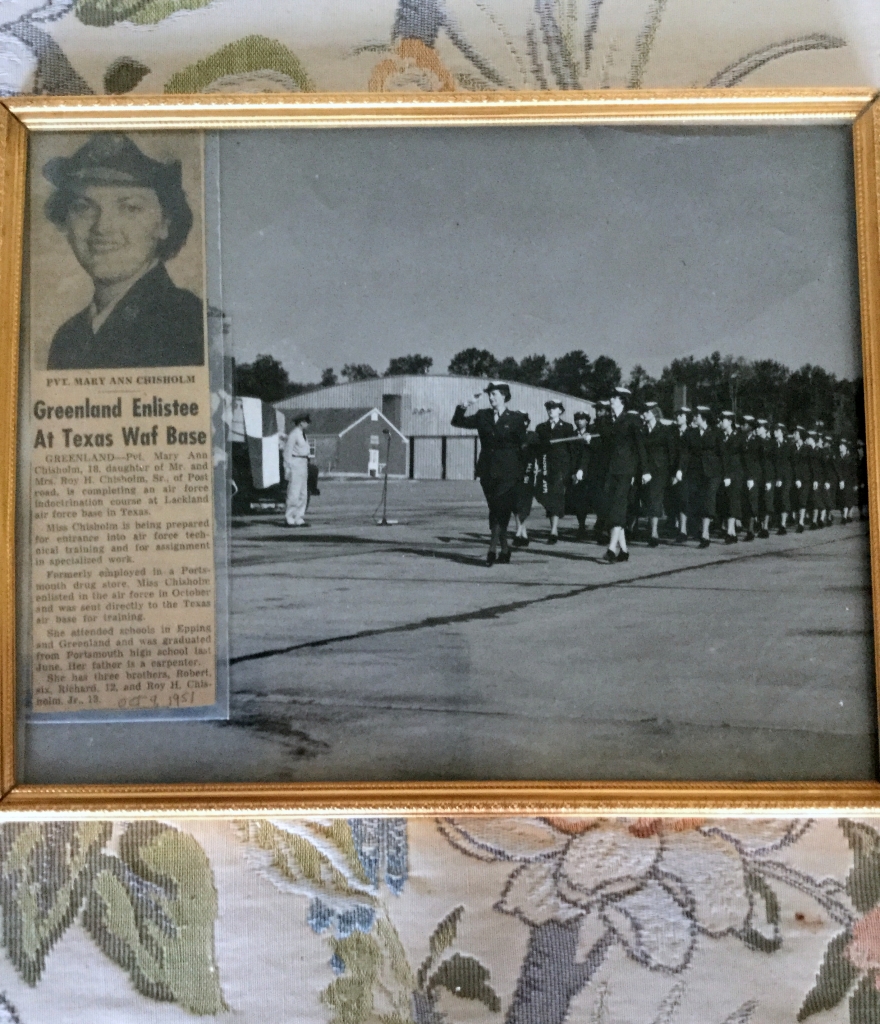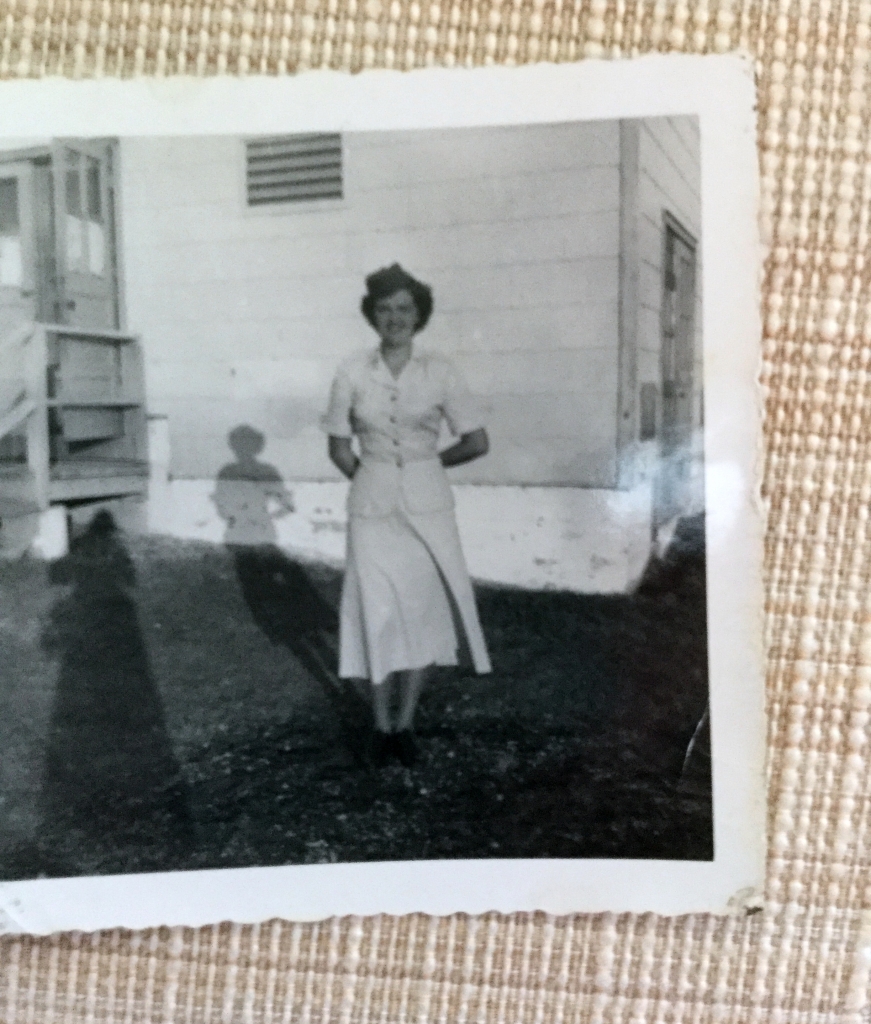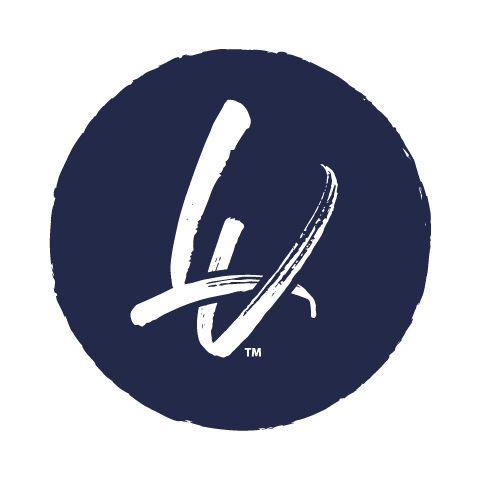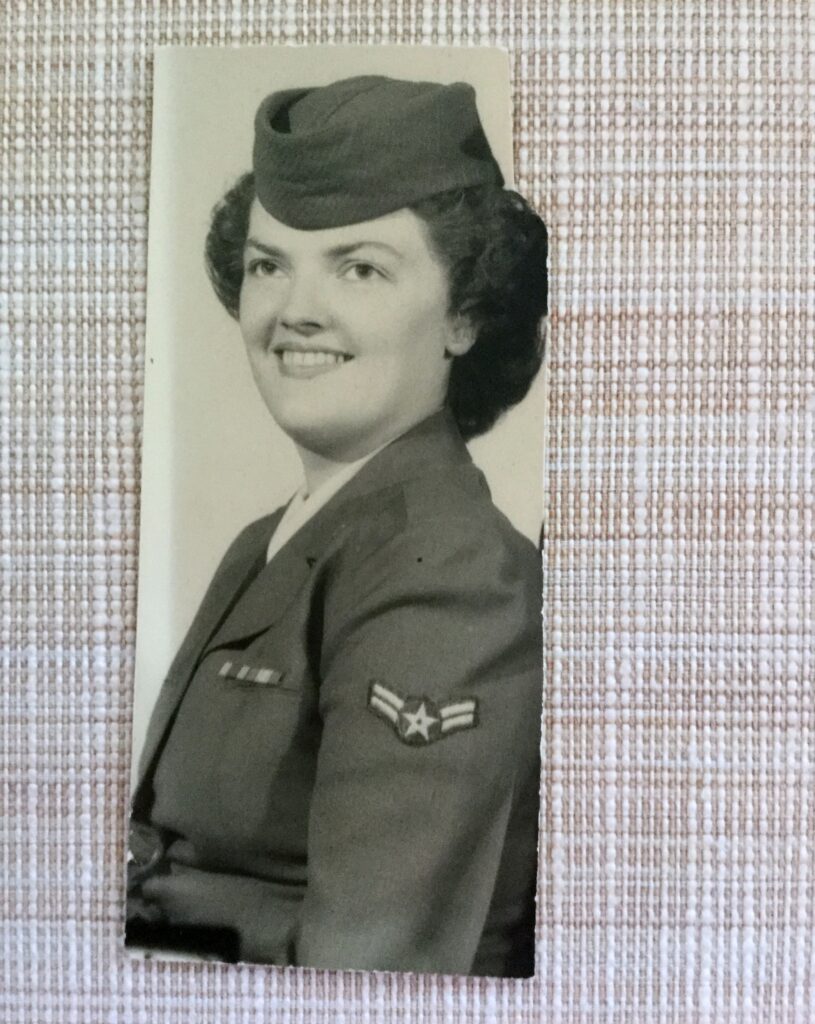We recently had the honor of speaking with Mary Chisholm Hamrick; a Korean War Era Veteran who served during a groundbreaking period of changes for women in the military. Now 87, she is easygoing in conversation and carries a warm demeanor with a natural smile. And she speaks about her military service with a look of fond nostalgia and a sprinkle of humor.
Coming of Age at the Start of a War
Mary Chisolm was at summer camp when the Korean War broke out in 1950. By the time she started her senior year that fall, recruiters came calling, working hard to sell the young students at her high school on the advantages of joining the military. Mary grew up in Greenland, New Hampshire near the Portsmouth Naval Shipyard. She thought it would be cool to join the Navy, despite having never been more than 50 miles from home. But at that time, the Navy did not accept recruits under the age of 21. With a chuckle, she recalls next turning her sights on the Air Force, “Because I thought they had pretty neat uniforms.”


WAF – Women in the Air Force
When Hamrick joined the Air Force in 1951, it was still a fledgling branch of the US military, having separated from the Army just four years prior. And President Truman signed the Armed Services Integration Act just three years before, permanently allowing women to serve in the military. The WAF program (Women in the Air Force) was established at the same time, which brought women into the Air Force in limited roles.
“We were told right away it was WAF,” she says, pronouncing WAF with a short vowel sound, like staff. “We’re not waffles!”
Hamrick attended basic training with other women at Kelly Field, adjacent to Lackland Air Force Base in San Antonio, Texas. Due to the ongoing Korean War, her time in basic was shortened to eight weeks. “It would have usually been 13 weeks, but we were pushed through because we were needed.” She also joined when the uniforms were in the process of being changed. “In basic, we were wearing part Army and part Air Force, then finally I think we were the first squadron to get the new blue uniform.”


Hamrick remembers wearing fatigues only for certain duties, and how hard it was to keep her summer uniform looking professional. “It was a blue and white seersucker, which was very hard to keep nice and stiff. It was not wash and wear stuff! You had to iron it. It had to be starched. You sit down, and when you get up, you’re wrinkled.”


Beyond Traditionally Female Jobs
In the early days of WAF, women were still being placed mostly in traditionally female jobs, such as stenographer or nurse. But Hamrick liked that the Air Force was more technical than the Army, and hoped to learn a skill she could use after the military. And she got her wish. After basic training and a battery of qualification tests, she was sent to school in Denver, Colorado to learn machine accounting and how to work with early IBM computers. In the early 1950’s, computers had a massive physical footprint. “They could take an acre of floor space to have what I have now in my iPhone.”
In the early 1950’s, computers had a massive physical footprint. “They could take an acre of floor space to have what I have now in my iPhone.”


After Denver, Hamrick was assigned to Headquarters, Eastern Air Defense Force in Newburgh, New York. One of her duties there was to track planes and provide reports to the brass. During the Korean War, EADF was an intermediate-level command and control organization under Air Defense Command, whose mission was to provide air defense for the Continental United States.
From Airman to Civil Servant
Just as she wanted, Hamrick’s training landed her a good job after the Air Force, operating IBMs for the Navy. She worked at a Naval Supply Center in California, keeping records and running monthly payroll for the entire Pacific Fleet. “You’d go to work in the morning, and you’d work all the way through until almost the next morning doing these payroll checks. They were those green checks, and you’re feeding the machine and you’re pumping ‘em out, and by the time you get through, your hands are green. They are GREEN,” She says with a chuckle. “I enjoyed working there, it was very good.”
Hamrick continued to take jobs in machine accounting, eventually ending up at the Internal Revenue Service where she helped people with their taxes. She spoke with her fair share of irate callers, but took in stride. “It wasn’t that bad. You have to realize it’s not you they’re upset with. And I could really help people, so it all worked out.”
Retiring to Family Life
After retiring from the IRS in the mid 90’s, Hamrick enjoyed traveling with her husband and kids. Now, all travel and in person visits have been put on hold due to the Pandemic. Before her husband died of Parkinson’s disease, her kids got her a smartphone and a tablet so they could share family pictures with their ailing father. The same devices now help her stay in touch with her children and grandchildren in an era of isolation, as she lives in a continuing care facility that is following current COVID-19 protocols.
Despite these challenges, she does her best to stay active and upbeat, even maintaining her yoga classes twice a week—although now attending virtually.


Looking Back
Hamrick finds it interesting to look back on how different her experience was nearly seventy years ago compared to women who serve today. “We had to represent that uniform. You had to be more of a lady. We even had a session on charm school, and how to wear makeup.” It was a time when female recruits were expected to appear attractive: they were formally schooled in posture and cosmetics along with their physical training and military indoctrination.
During the era in which she served, there were also many negative assumptions of women in the military, which Hamrick was happy to prove wrong. Even her uncle (a career soldier) advised against it, telling her she would end up being a drinker and a smoker. “People didn’t think too much of women going into the service, assuming you’re going to be this and that. I’m reading about college students having panty raids, and here I am having bed checks at 10 o’clock.”
Setting a Strong Example
In addition to paving the way for future generations of women who would join the military, Hamrick was the oldest in a family of five siblings, and set a strong example for her four younger brothers. Her oldest brother followed suit and joined the Air Force, while two others became Soldiers in the Army.
A Lifetime of Changes
Reflecting on her life, Hamrick is in awe of how much has changed. “In my lifetime, I’ve gone from growing up with horse and buggy and now look at us. I’m 87. What’s happened in 87 years, it’s unbelievable. We thought World War Two was the end of all wars. And then there’s Korea, then Vietnam and the Gulf and it’s just never going to end. That’s civilization.”
As an Airman in the early days of the Air Force, we were eager to learn Hamrick’s opinion of the US Space Force, America’s newest branch of the military. Fascinated by space travel, she is completely on board. “Oh, I think it’s great… I think it’s a good thing for these young people to get interested in, and to get in on the ground floor with something like that. Be a space cadet!” She says with a joyful laugh.
Fond Memories
It’s been more than 65 years since Hamrick folded away her uniforms, but she still remembers her time in the Air Force fondly and wishes she had stayed longer.
“I never had any problems with anything in the military. You worked with a lot of men, and I’m the type of person if I hear something, you know, the guys are telling jokes and it’s really funny. But I wouldn’t laugh—I wouldn’t give them the idea that I heard it, because I didn’t want to encourage anything. I got along fine with everyone.”
A Humble Contribution, Recognized
Although humble about her contribution to the military during wartime, Hamrick does acknowledge the role she filled so many years ago, and her place now as a Veteran. “People thank you for your service, and you think, oh, I didn’t do that much, I wasn’t fighting. But still, it was your contribution.” Her job was essential, and filling it freed able-bodied men for the Korean battle zone.
Each Veteran’s Day, she and other Vets in her community are recognized in a program put on by local Veterans organizations. “Once in a while, I wear a medal or something. Usually a Good Conduct Medal, because I want them to know!” She says with a hearty laugh.
Mary Chisholm Hamrick was indeed good in the Air Force. Thank you, Airman, for your service.


Do you know an amazing Lady Vet with a story to share? Email us at narratives@ladyvetusa.com for a chance to be featured on the Lady Vet Blog.





What a beautiful story. Having watched many movies from that era it felt like I was in the story as you told it so elegantly. I’m so glad you are getting these women’s experiences down for so many to see and understand . Thank you Lady Vet for being their voices.
So glad you enjoyed, Julia! It is an honor to share women’s military experiences including trailblazers like Mary.